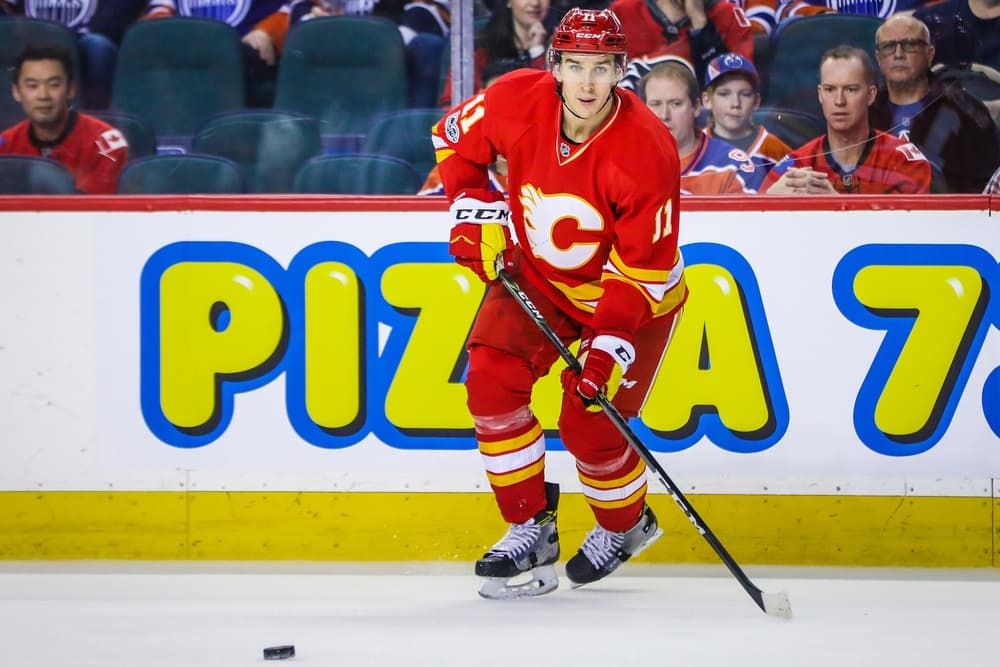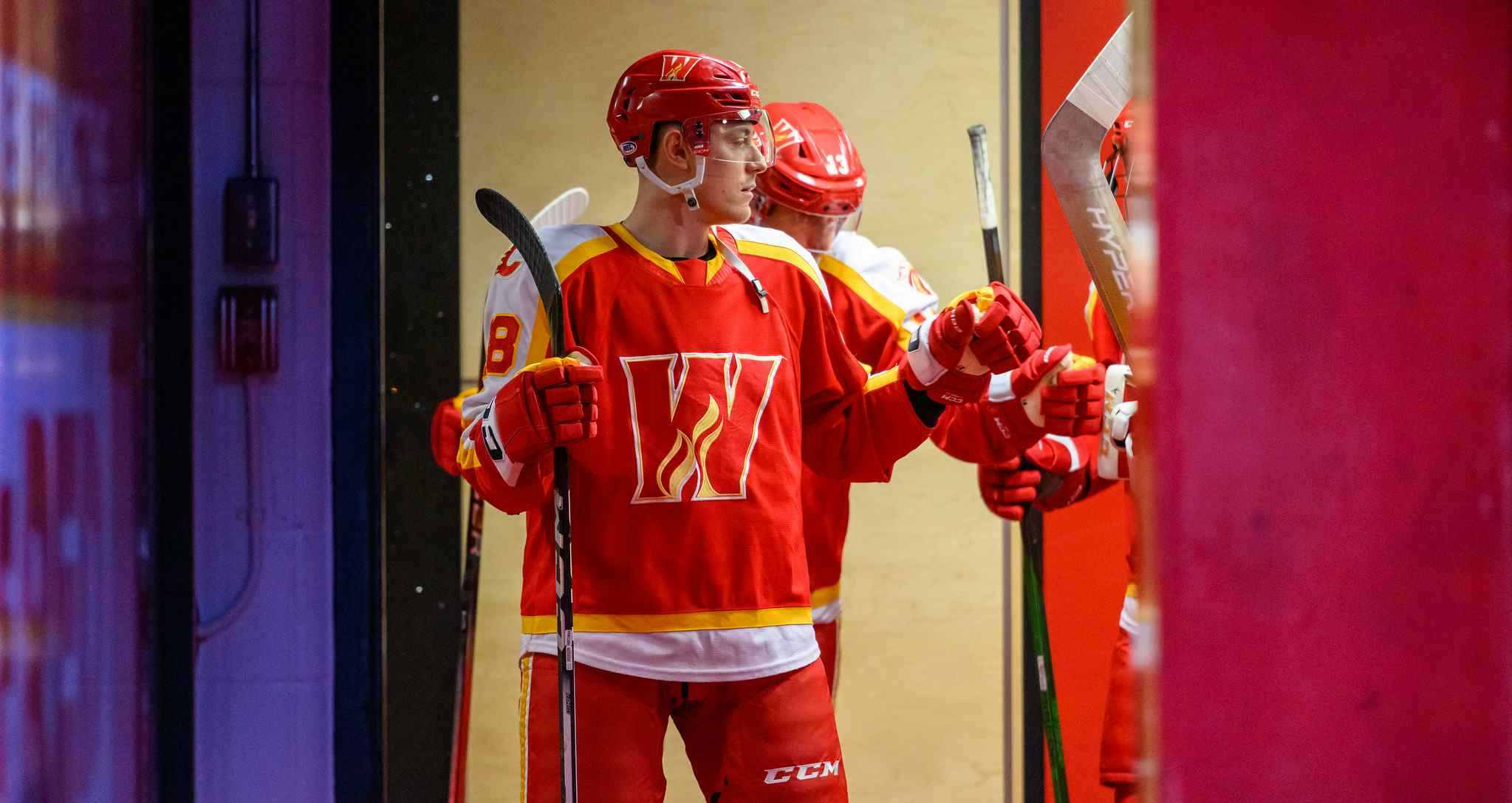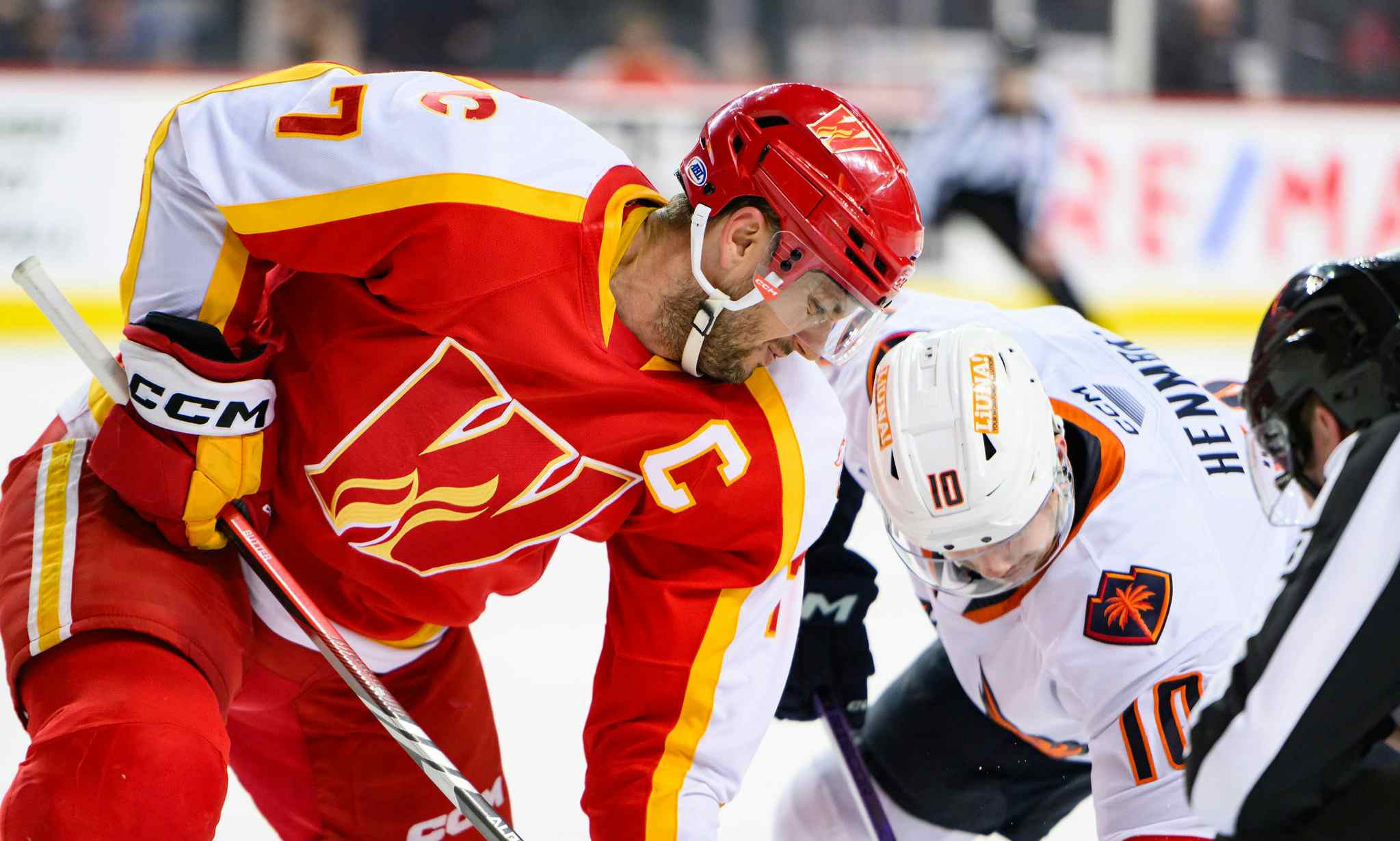Mikael Backlund’s reemergence massive for the Flames down the stretch

Mikael Backlund might be playing the best hockey of his career right now. If he’s not, Backlund is unquestionably playing his best hockey of the season. As Calgary’s playoff push continues, Backlund’s return to being a two-way force might be the team’s biggest recent development. If this is the norm down the stretch, a second straight postseason appearance is very much in the cards.
Recent returns
Backlund’s last ten games have been downright dominant. Back at centre, Backlund has been the driving force on a line with Matthew Tkachuk and Andrew Mangiapane, which has been Calgary’s best line February and it isn’t close. Individually, Backlund has been a difference maker all over the ice with his five-on-five outputs since February 8th as evidence.
| CF% | HD Chances | OSZ% | Production (overall) |
| 58.6% (2nd) | 43-19 | 51.8 | 9-8-17 |
13 of Backlund’s 17 points, and seven of his nine goals, have come at even strength during this ten-game stretch, which is beyond impressive. Offensively, he looks like a completely different player. Backlund is finishing chances with authority, making confident decisions with the puck (hello final minute in Nashville), and playing with a swagger we haven’t seen all season long.
But it’s not like the team has started feeding Backlund offensive opportunity to get his game going. Backlund is getting things done the way he always has. That’s by being strong defensively, driving the play north, and going to work down low on the attack. There have been nights this month, including Tuesday and Thursday of this week, where opposing teams have had no answer for Backlund and his line. It has been eye-opening to say the least.
What changed?

There are a few things at work here. The move back to the middle can’t be discounted, because it has put Backlund where he’s most comfortable and most effective after two months on the wing. It was an interesting experiment, but I think we all knew Backlund going back to centre was inevitable. I just don’t know if we thought it would come with such resounding success.
But this goes beyond just a position change. Prior to his return to centre on February 8th, Backlund and head coach Geoff Ward had a one-on-one chat. Backlund wanted to be used differently, which Ward obliged, but not without a challenge. The coach needed one of his most impactful players to, well, start making more of an impact.
“We had a good talk,” Backlund told me earlier this month. “I just felt that I want to be a centre and I…felt like I’m better when I’m driving a line as opposed to being a winger. I feel like the centre is usually the driver of a line. Playing with Johnny and Mony was a lot of fun, but they’re really skilled players and they want the puck a lot. I just felt like I want to be that guy on a line. It all came down to I wanted to be better, he wanted me to be better, but also that I felt that I wanted to be a centre.”
It’s hard to argue with how things have gone since Backlund was put back in a spot to, in his words, drive a line. He’s had his foot on the gas pedal routinely between Tkachuk and Mangiapane, and their five-on-five results have been staggering.
| GP | CF% | HD Chances | OZS% |
| 10 | 61.1 | 36-12 (75.0%) | 51.9 |
It was interesting to hear Backlund talk about driving a line. It’s one of the most commonly used terms used by us nerds who subscribe to shot-based analytics, but I’d never heard it used by an NHL player himself. Backlund’s description is a perfect way to paint the picture of how things like zone starts, possession, and scoring chances all work together.
“I feel like when I’m at my best, I do a good job in my own zone intercepting the play and, you know, driving the play out of the zone, making sure we drive it in and then create some offence.”
Check, check, and…check.
What this means
When he’s is on his game, and when Elias Lindholm isn’t also playing down the middle, Backlund is Calgary’s most complete centre. He might not put up offensive totals like Sean Monahan or win face-offs like Derek Ryan, but he does everything well in all three zones. Monahan doesn’t defend and drive play like Backlund does, while Ryan doesn’t have the same type of offensive upside.
My colleague Peter Loubardias always says something to the effect of: when Backlund is at his two-way best, the Flames don’t often lose. That statement is as accurate as it comes, because when a team can have their most well-rounded centre playing at the top of his game, new levels can be reached. That’s what we’re seeing right now from Backlund.
There’s an interesting trickle-down effect to what we’re seeing, too. Right now, Backlund’s line is taking on the toughest opposition matchups on a nightly basis and doing so with a relatively even zone start ratio. With how Backlund and crew are playing, there’s no reason for Ward to alter that utilization.
Other centres Derek Ryan (~48%) and Mark Jankowski (~40%) are taking a ton of defensive draws lately, typically against other third and fourth lines. Combine that with how Backlund’s line is being used and performing, the door has been wide open for Calgary’s top offensive trio of Monahan, Lindholm, and Johnny Gaudreau.
| Player | OZS% |
| Elias Lindholm | 60.6 |
| Sean Monahan | 60.6 |
| Johnny Gaudreau | 60.4 |
The Monahan line is Calgary’s most dangerous unit, so giving them high ground like above makes sense. There’s even more wisdom in going that route when you consider the defensive shortcomings they can have, even with Lindholm back on the right side. If Backlund keeps playing at this high a level, five-on-five time is going to be that much easier for Monahan and company.
Recent articles from Pat Steinberg





